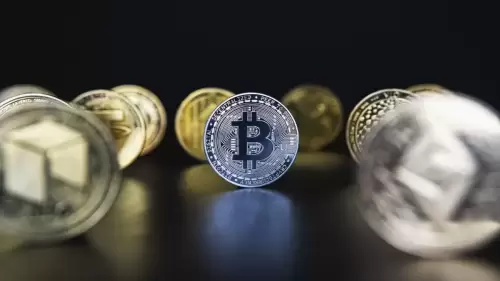Exploring Ripple's RLUSD stablecoin, its potential to disrupt global remittances, and the evolving regulatory landscape.

Ripple's RLUSD Stablecoin: Revolutionizing Remittances or Crypto's Next Big Thing?
Ripple's RLUSD stablecoin is making waves, aiming to reshape global remittances with faster, cheaper, and more transparent cross-border payments. Is it the future of finance?
RLUSD: A Game Changer for Global Remittances?
Traditional bank wires are facing increasing challenges, and Ripple's RLUSD stablecoin is stepping up as a potential solution. Ripple shared on July 11 that RLUSD, built on the XRP Ledger and pegged to the U.S. dollar, offers real-time settlement and transparency, cutting out the legacy financial infrastructure that often leads to delays and high fees. With the remittance market hitting $685 billion in 2024, the potential impact is huge.
How RLUSD Works and Why It Matters
RLUSD allows users, especially in emerging markets, to receive funds via digital wallets and easily convert them to local currency, bypassing traditional banks. This is particularly beneficial in regions with limited banking access. Ripple is even using RLUSD for philanthropic initiatives, allocating $25 million to nonprofits for faster and more transparent aid disbursement.
RLUSD vs. Traditional Methods: A Clear Winner?
Traditional money transfers can charge up to 6.4% in fees, not to mention foreign exchange costs. RLUSD offers a cheaper and faster alternative, with fully trackable transactions on the blockchain. The numbers speak for themselves: stablecoin volumes reached $27.6 trillion in 2024, surpassing the combined transaction volumes of Visa and Mastercard.
Regulatory Hurdles and Future Growth
While adoption is accelerating, Ripple acknowledges the need for regulatory clarity and strong fiat on- and off-ramps. RLUSD is structured to meet these demands, aiming to be a secure and compliant digital dollar. The recent approval from the Dubai Financial Services Authority (DFSA) is a significant step forward, allowing RLUSD to be used in the Dubai International Financial Centre (DIFC).
The Garlinghouse Factor: Crypto's Steve Jobs?
XRP lawyer John Deaton has praised Ripple CEO Brad Garlinghouse, even suggesting he could be the Steve Jobs of the crypto industry. While some might debate this comparison, Garlinghouse's vision and leadership are undeniable, particularly in navigating the complex regulatory landscape and driving Ripple's innovative solutions. And Ripple's collaboration with BNY Mellon to serve as the primary custodian for the RLUSD reserve underscores Ripple's commitment to ensuring the stability and security of its stablecoin.
Looking Ahead: RLUSD's Potential and Challenges
The stablecoin market is projected to reach $1 to $2 trillion in the coming years, according to Garlinghouse. Ripple's entry with RLUSD is a strategic move to disrupt the $685 billion remittance industry. Its success hinges on navigating regulatory hurdles and achieving widespread adoption.
So, is RLUSD the next big thing in crypto? Only time will tell. But with its focus on efficiency, transparency, and accessibility, it's definitely one to watch. Maybe one day we'll all be sending RLUSD to our friends and family instead of those clunky old bank wires. Wouldn't that be something?






















































































